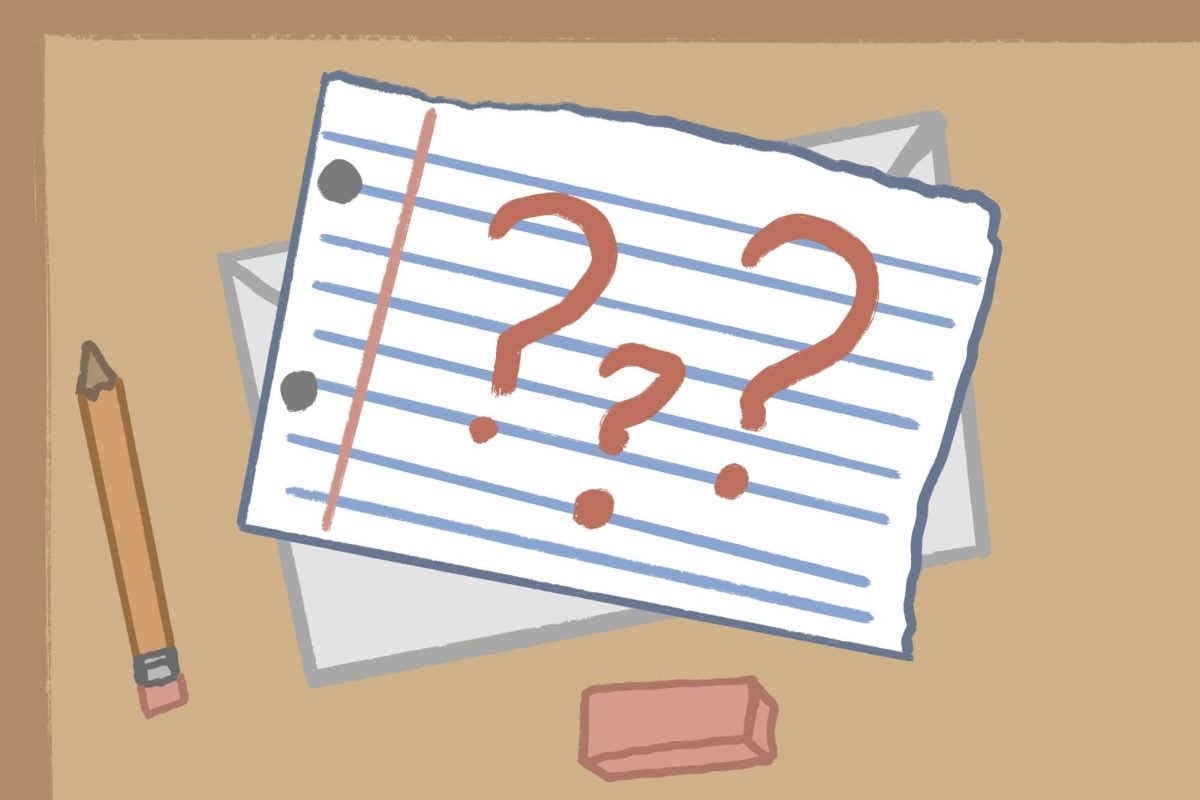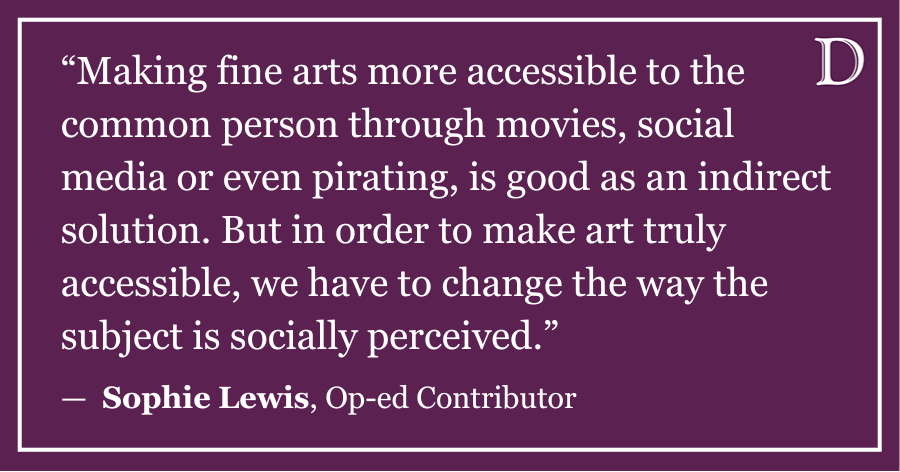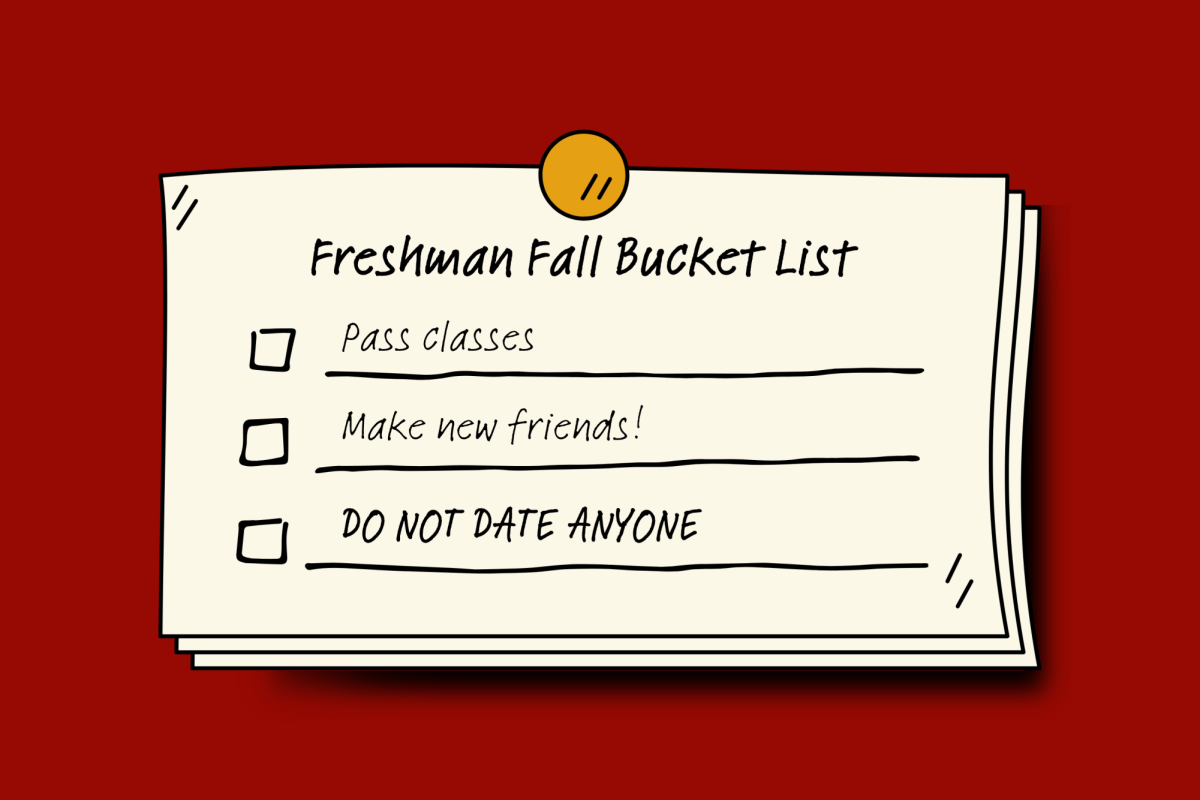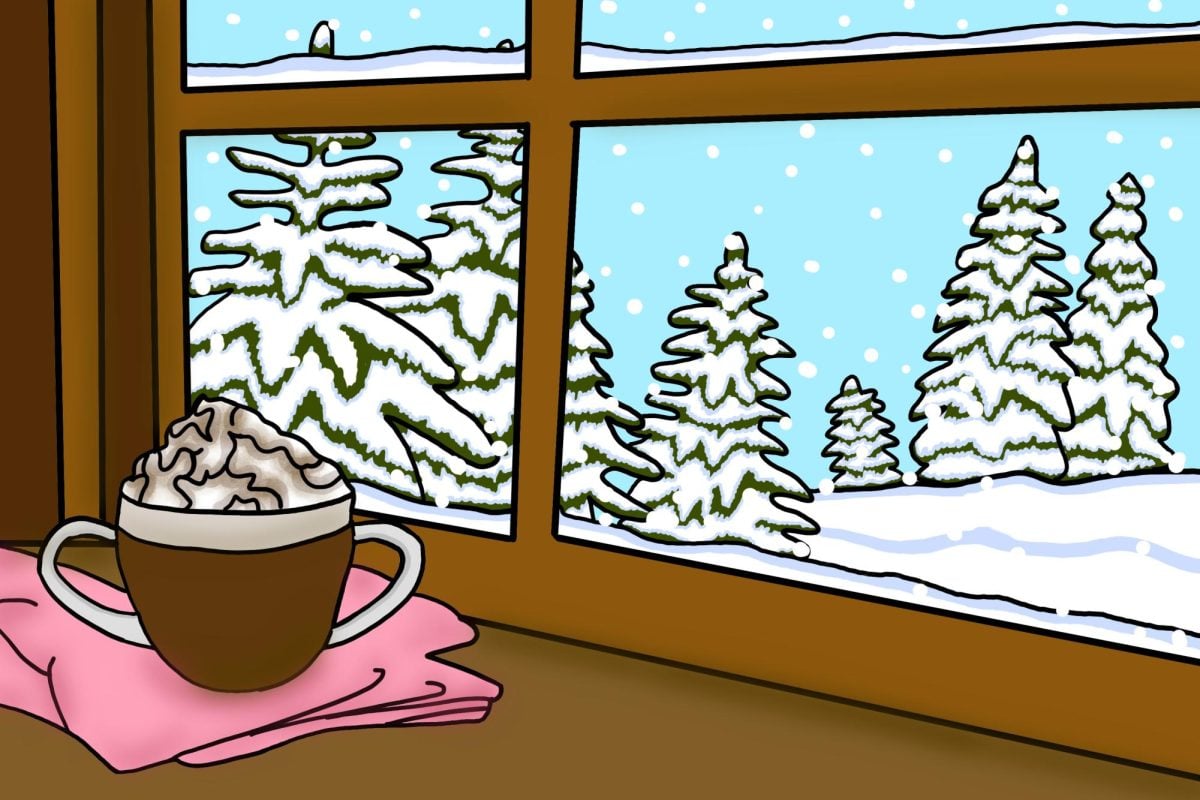Dear Reader,
If you’ve gone through the first few weeks of college, you have probably been in some version of this scenario: There are a lot of people in a small space, like a dorm room, a basement or a dining hall table. At least half are either on their phones, asleep or so checked out you could probably turn the lights out and they wouldn’t blink. And someone is telling a story. You aren’t sure how long they have been telling this story; it’s possible they have been telling it since before you were here, and they will almost certainly be telling it, or another one, long after you leave. You cast your eyes about the room, which inevitably also contains one or two people still nodding along (everyone else is nodding off), and you lock eyes with the person telling the story. With a sense of horror, it dawns on you that, incredibly, they don’t want to be telling the story either. They just don’t know how to stop. This scenario is scarier than any horror movie to me.
As an English major (and a student journalist) and a human being, I know that no matter what you plan to do with the rest of your life, telling a good story is crucial to functioning in any social context. It’s how you relate to people, how you tell them about yourself and how you demonstrate your ability to not lull everyone into a trance-like state with stories that don’t go anywhere. Here are the steps I use to tell a story that sounds like I just made it up:
You need to figure out how much time you have
This is the most important step, but obviously the most difficult to do on the fly. It’s also impossible to predict timing completely, so resign yourself now to the legions of hilarious anecdotes that you will have to abandon because someone trips on the sidewalk or a car splashes you or you run into another group of people you know. Whatever you do, do not attempt to finish a story that half the group hasn’t heard the beginning of, unless you can sum it up in five seconds or less.
The trickiest part of the art of storytelling is fitting your story into the time you have. The best stories are like accordions: you can expand or contract them to fit an allotted amount of time, embellishing the details when needed or streamlining the plot to get straight to the point. If you have the time (and the practice), you can figure out which parts of the story are integral to the ending, and just keep those. For example, if you were telling a funny story about a Halloween costume, a runaway ferret and a cocktail bar, you wouldn’t need to tell us all what you ate for breakfast that morning (unless if was somehow ferret- or Halloween costume-related, in which case it could be a funny detail, I guess.)
Assess your audience
This is the step I miss the most often, with the most disastrous results. This shouldn’t need to be said, but obviously the way you tell a story to the Thanksgiving table is not the way you should tell it to the people you met in college a few weeks ago. Right before you open your mouth to start a hilarious anecdote about traffic cones and squirrels, take at least half a second to go over the story, take a good look at the people you’re telling it to and maybe try to match the two up to avoid any awkward, obvious pauses.
Then start with somewhere they’ve been before —
The best part about starting a story is where you begin it. Contrary to popular belief, I like to start a story with a situation everyone has been in before: an awkward party, a weird first date, a ridiculous coworker. Absolutely crashing into the narrative in media res is alright for Homer, but if you’re not an epic poet your audience kind of needs some way to actually empathize with the story.
And disrupt it
But, and this is a very important but, you need to disrupt the regular flow of events. The party needs to get a lot more fun (or a lot more awkward), a first date would benefit from an event that goes beyond the usual awkwardness and your ridiculous coworker had better have a secret identity or work for the CIA or something. This is where I think a lot of storytellers steer wrong — the success of telling a relatable story is so intoxicating that they think if they just keep it going, the audience will remain engaged and excited to hear more. They are wrong. There is a (very!) short amount of time that hearing about events you can relate to is fun, and it quickly becomes unimaginably boring to hear someone describe things that you have simply done, like make yourself cereal or walk down Sheridan. If your story doesn’t deviate from what people might expect to happen, please ask yourself very sternly why exactly it is that you are telling it.
End with what you learned
This is kind of trite and embarrassing, but ending a story with a moral, even if it’s a silly, kind of fake one, indicates to your audience that you’re done, you’re ceding the floor, and has the added benefit of letting you know when it’s good to shut your mouth and let other people talk. Maybe you learned that you should never take a first date to a rollercoaster park. Or maybe you learned that even CIA agents need a second job. Whatever your moral is, spit it out and get offstage (metaphorically). A story is just the start of a conversation.
Learning how to tell a good story is important, not just for your relationships with other people but for how you understand your own life. Going into every adventure and picking yourself up after every failure gets a lot easier when you can frame it as just one episode in a long series of funny, sad and moving stories that you can tell other people someday. If you can tell a really good story, it means you’ve lived a good life so far. You may not be Homer, but in the hands of a storyteller, every life is epic.
If you have a pressing problem you need advice on, or a response to this, email [email protected] with “Best Guess” in the subject line.
Mika Ellison is a Medill senior. She can be contacted at [email protected]. If you would like to respond publicly to this op-ed, send a Letter to the Editor to [email protected]. The views expressed in this piece do not necessarily reflect the views of all staff members of The Daily Northwestern.





